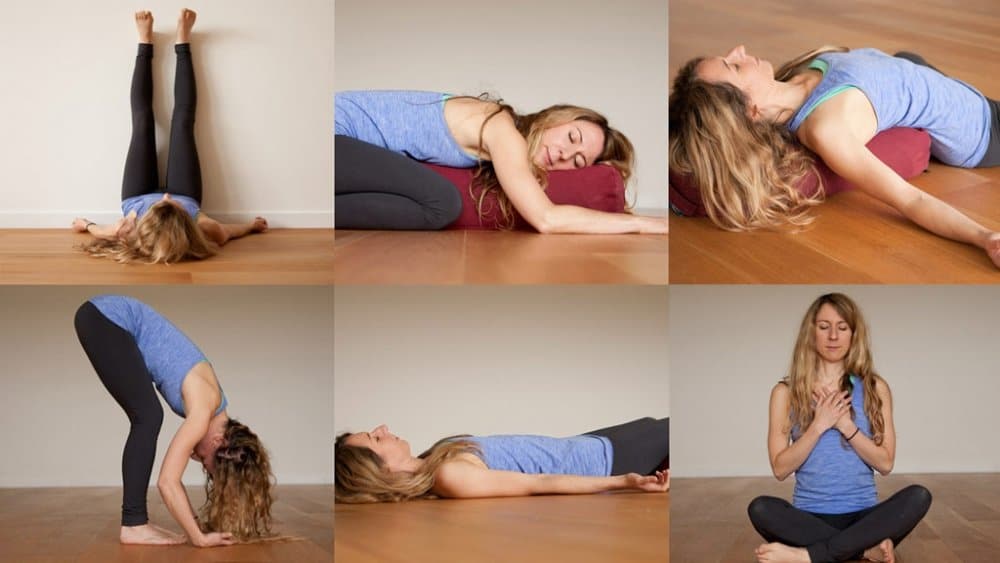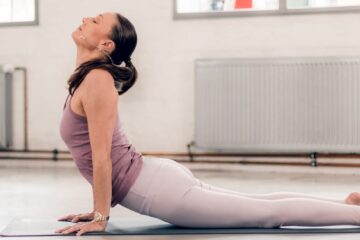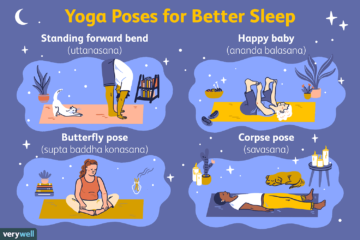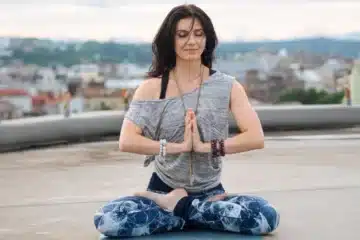Relieve anxiety with these gentle yoga poses at Stress Relief Sanctuary. Ease your mind and body with these calming exercises.
Find peace and serenity through the practice of gentle yoga poses. In today’s fast-paced world, stress and anxiety have become common challenges. Taking time to practice gentle yoga poses can provide a much-needed sense of relief. Incorporating these poses into your routine can help you find calmness and balance.
Whether you are a seasoned yogi or new to the practice, these gentle poses can help alleviate anxiety and promote a sense of well-being. Let’s explore the nurturing power of gentle yoga poses for anxiety relief.
Benefits Of Gentle Yoga For Anxiety
Gentle yoga is a wonderful practice for reducing anxiety and promoting overall well-being. By incorporating gentle movements, deep breathing, and mindfulness, it can have a positive impact on both the mind and body. Let’s explore the specific benefits of gentle yoga for anxiety.
Improves Mental Well-being
Gentle yoga has been shown to improve mental well-being, providing relief from anxiety and stress. By focusing on the present moment and engaging in mindful movements, individuals can experience a greater sense of calm and relaxation. The practice encourages self-awareness, helping to cultivate a more positive mindset and reducing negative thoughts.
Reduces Physical Symptoms
Gentle yoga not only benefits the mind, but it also helps reduce physical symptoms that can accompany anxiety. Through slow, controlled movements and gentle stretching, the practice releases tension from the body. This can alleviate tight muscles, improve flexibility, and promote better blood circulation. In turn, individuals may experience reduced physical discomfort such as headaches, muscle aches, and digestive issues.
Preparation For Gentle Yoga
Discover the stress relief sanctuary of gentle yoga poses to soothe anxiety. Prepare yourself for a calming practice that promotes relaxation and harmony in both mind and body.
“`html Preparing for Gentle Yoga “` Gentle yoga can be a soothing and effective way to alleviate anxiety and reduce stress. Before diving into the practice, a proper preparation routine is key. This includes setting up a calming space and gathering comfortable props to ensure a peaceful and relaxing environment. “`html
Selecting A Calming Space
“` When preparing for gentle yoga, choose a quiet and clutter-free area in your home. Aim for a space with natural light and fresh air, if possible. This serene environment will help you to create a sanctuary for your practice, allowing you to fully focus on releasing stress and tension. “`html
Gathering Comfortable Props
“` To enhance your gentle yoga experience, gather comfortable props such as yoga mats, blocks, bolsters, and blankets. These props can provide support and help you maintain proper alignment during the poses, allowing for a deeper sense of relaxation and ease. By setting up a calming space and gathering comfortable props, you can create the ideal environment for gentle yoga practice, fostering a sense of tranquility and peace to help alleviate anxiety and stress.
Gentle Yoga Poses For Stress Relief
Are you feeling overwhelmed by stress and anxiety? Gentle yoga poses can be a powerful tool for finding peace and serenity amid life’s chaos. These simple yet effective yoga poses help to soothe the mind and relax the body, providing a much-needed escape from the hustle and bustle of daily life. Incorporating gentle yoga into your routine can help you find a sense of calm and balance, allowing you to let go of tension and stress. Here are some gentle yoga poses for stress relief that can be your sanctuary amidst the chaos.
Child’s Pose (balasana)
Begin by kneeling on the floor, then sit back on your heels and lower your forehead to the ground. Extend your arms in front of you or rest them by your sides, allowing your body to relax and release tension. Take deep breaths, feeling the calming sensation of this gentle pose.
Cat-cow Pose (marjaryasana-bitilasana)
Start on your hands and knees, alternating between arching your back upward like a cat and then lowering it down like a cow. This flowing movement helps to release tension in the spine and promote a sense of ease and flexibility in the body.
Standing Forward Bend (uttanasana)
Stand with your feet hip-width apart, then slowly bend forward, allowing your head and arms to hang loosely. This pose gently stretches the back of the legs and helps to calm the mind, encouraging a sense of release and relaxation.
Legs-up-the-wall Pose (viparita Karani)
Lie on your back, then extend your legs upward, resting them against a wall or support. This gentle inversion pose promotes circulation and helps to ease tension in the legs and lower back, offering a soothing and rejuvenating experience.
Corpse Pose (savasana)
Lie flat on your back, arms by your sides, and close your eyes. Allow your body to completely relax and sink into the ground, embracing a state of deep relaxation and tranquility. This final resting pose is a perfect way to conclude your gentle yoga practice, leaving you feeling refreshed and at peace.
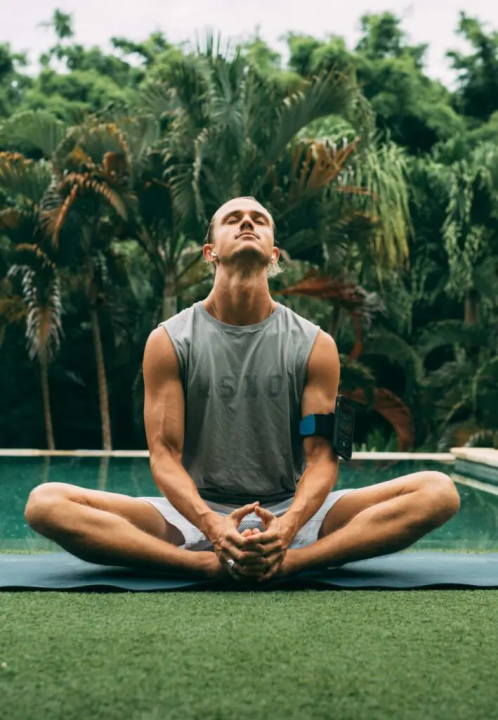
Credit: www.linkedin.com
Breathing Techniques For Relaxation
Welcome to the Stress Relief Sanctuary blog, where we provide you with gentle yoga poses and techniques to help you release anxiety and find inner peace. In this article, we will focus on breathing techniques for relaxation. Deep belly breathing and alternate nostril breathing are two powerful techniques that can instantly calm your mind and promote deep relaxation. Let’s explore how you can incorporate these techniques into your yoga practice.
Deep Belly Breathing
Deep belly breathing, also known as diaphragmatic breathing or belly breathing, involves breathing deeply into your belly rather than shallowly into your chest. It is a simple yet highly effective technique to relax your body and mind.
Here’s how you can practice deep belly breathing:
- Find a quiet and comfortable place to sit or lie down.
- Place one hand on your chest and the other on your belly.
- Take a slow, deep breath in through your nose, feeling your belly rise as you fill your lungs with air.
- Hold the breath for a moment at the top.
- Exhale slowly through your mouth, allowing your belly to gradually fall as you release the air from your lungs.
- Repeat this pattern of deep belly breathing several times, focusing on the sensation of your breath entering and leaving your body.
Alternate Nostril Breathing
Alternate nostril breathing, known as Nadi Shodhana in Sanskrit, is a breathing technique that helps balance the energy in your body and restore a sense of calm and harmony.
Here’s how you can practice alternate nostril breathing:
- Sit in a comfortable position, with your spine straight and shoulders relaxed.
- Close your right nostril with your right thumb and inhale deeply through your left nostril.
- At the top of your inhale, close your left nostril with your right ring finger, releasing your thumb from your right nostril.
- Exhale slowly through your right nostril.
- Inhale deeply through your right nostril.
- At the top of your inhale, close your right nostril with your right thumb, releasing your ring finger from your left nostril.
- Exhale through your left nostril.
- Repeat this pattern, alternating nostrils for each inhale and exhale.
Alternate nostril breathing can be done for a few minutes or longer, depending on your comfort level. It is a wonderful practice to do before meditation or whenever you need a quick moment of calmness and clarity.
By incorporating deep belly breathing and alternate nostril breathing into your yoga practice, you can tap into the power of your breath to reduce anxiety and promote relaxation. Remember to take it at your own pace and enjoy the soothing effects of these breathing techniques. Stay tuned for more stress-relieving yoga poses and techniques in our upcoming articles.
Creating A Regular Gentle Yoga Practice
Discover the calming power of creating a regular gentle yoga practice to relieve stress and anxiety. Explore a sanctuary of gentle yoga poses designed to help you find peace and tranquility amidst life’s challenges.
Creating a Regular Gentle Yoga Practice Setting Realistic Goals Incorporating Mindfulness Setting Realistic Goals When starting a regular gentle yoga practice, it is important to set realistic goals. Take the time to assess your current level of flexibility, strength, and overall well-being. Be honest with yourself about what you want to achieve and the time and effort you are willing to put into your practice. Setting realistic goals allows you to feel a sense of accomplishment as you progress and prevents you from becoming discouraged. Incorporating Mindfulness Mindfulness is an essential aspect of a regular gentle yoga practice. By focusing on the present moment and becoming aware of your thoughts, sensations, and emotions, you can cultivate a deeper connection with yourself on and off the mat. Incorporating mindfulness into your yoga practice helps you become more attuned to your body’s needs, allowing for a safer and more effective practice. It also promotes relaxation and helps to calm the mind, reducing anxiety and stress. By setting realistic goals and incorporating mindfulness into your regular gentle yoga practice, you can create a sanctuary for stress relief and anxiety management. Take the time to assess your goals and remember to be patient and compassionate with yourself as you progress. With each practice, you will deepen your mind-body connection and experience the numerous benefits of gentle yoga.

Credit: m.youtube.com
Frequently Asked Questions Of Stress Relief Sanctuary: Gentle Yoga Poses For Anxiety
Can Yoga Help With Anxiety?
Yes, yoga can help reduce anxiety by promoting relaxation, deep breathing, and mindful movement. The gentle poses and focus on breath work help calm the nervous system and relieve stress.
Which Yoga Poses Are Best For Anxiety?
Some gentle yoga poses that are particularly effective for anxiety relief include child’s pose, cat-cow stretch, forward fold, and legs-up-the-wall pose. These poses promote relaxation, release tension, and help bring a sense of calm.
How Often Should I Practice Yoga For Anxiety Relief?
Consistency is key when using yoga for anxiety relief. Aim to practice at least three times per week for noticeable results. However, even practicing once a week can provide some benefits. Listen to your body and adjust the frequency based on your needs.
Can Beginners Do Yoga For Anxiety?
Absolutely! Yoga for anxiety is suitable for beginners. Start with gentle poses and gradually increase difficulty as you become more comfortable. It’s important to listen to your body, modify poses when necessary, and work at your own pace.
Conclusion
Incorporating gentle yoga poses into your daily routine can be a powerful tool in managing anxiety and finding stress relief. These poses are accessible for all levels and can be practiced anywhere, making them a convenient resource to turn to when you’re feeling overwhelmed.
By incorporating deep breathing, gentle stretches, and mindfulness, you can create a sanctuary for yourself to find peace and calm amidst the chaos of everyday life. So, why not give it a try and experience the transformative power of yoga today?

